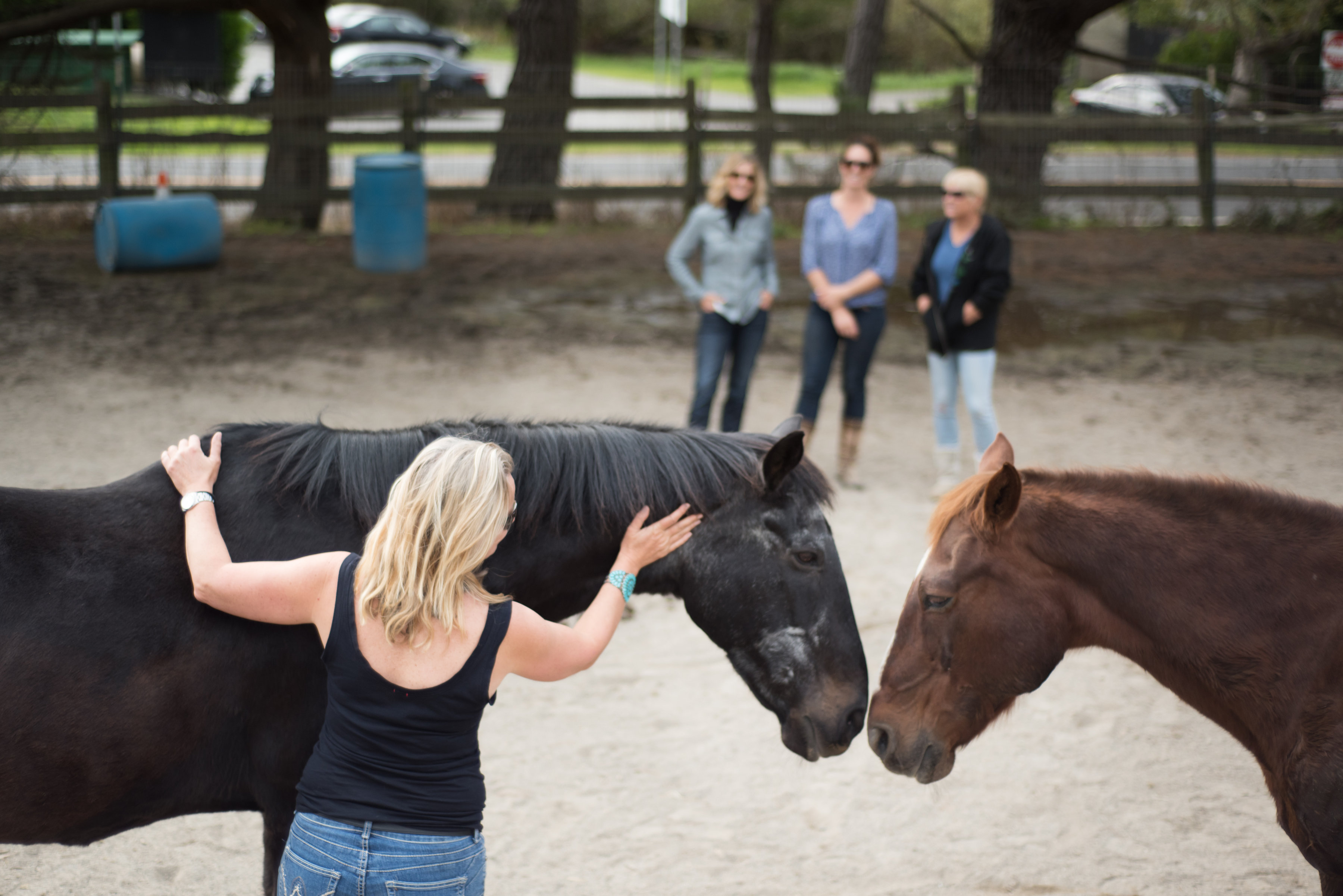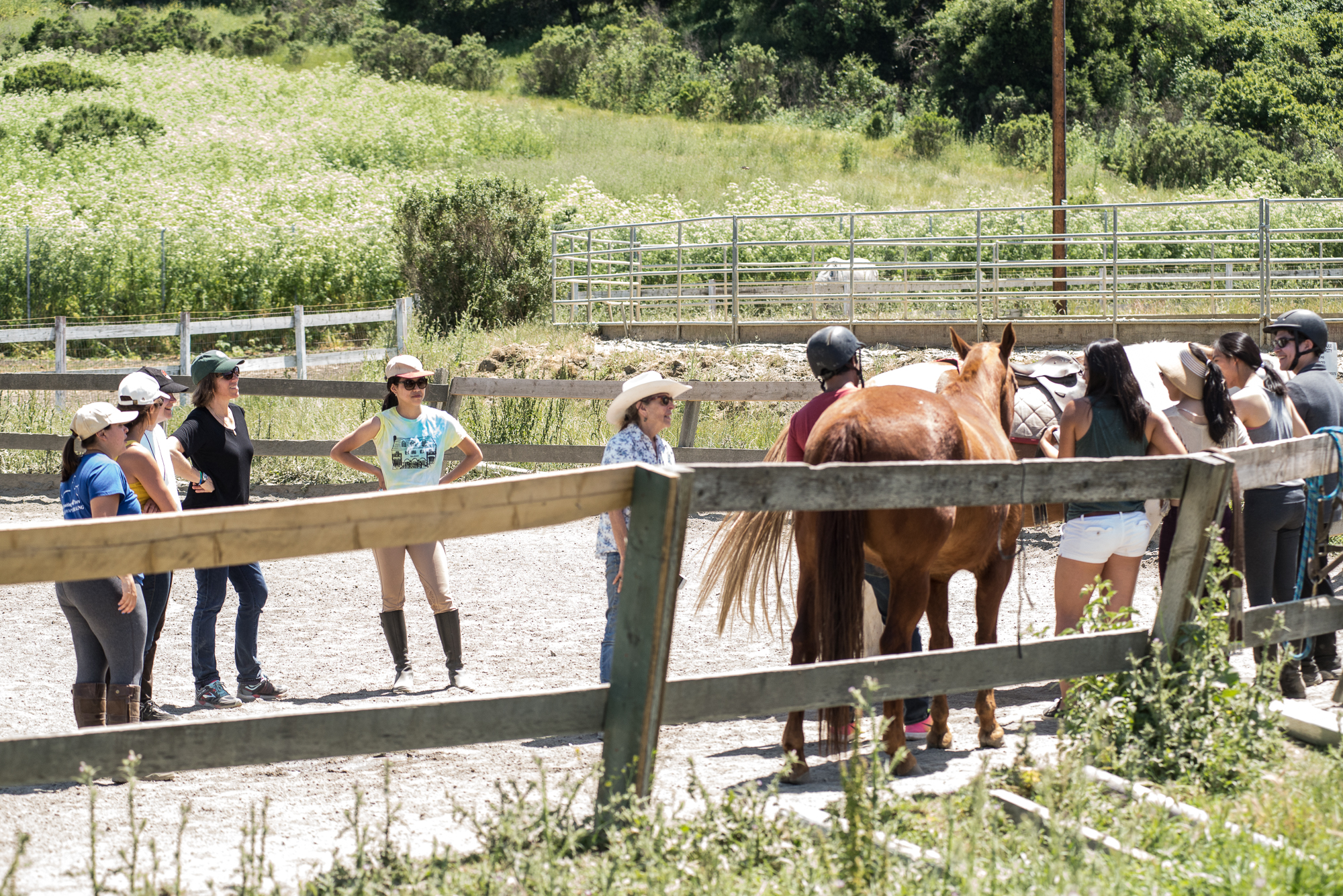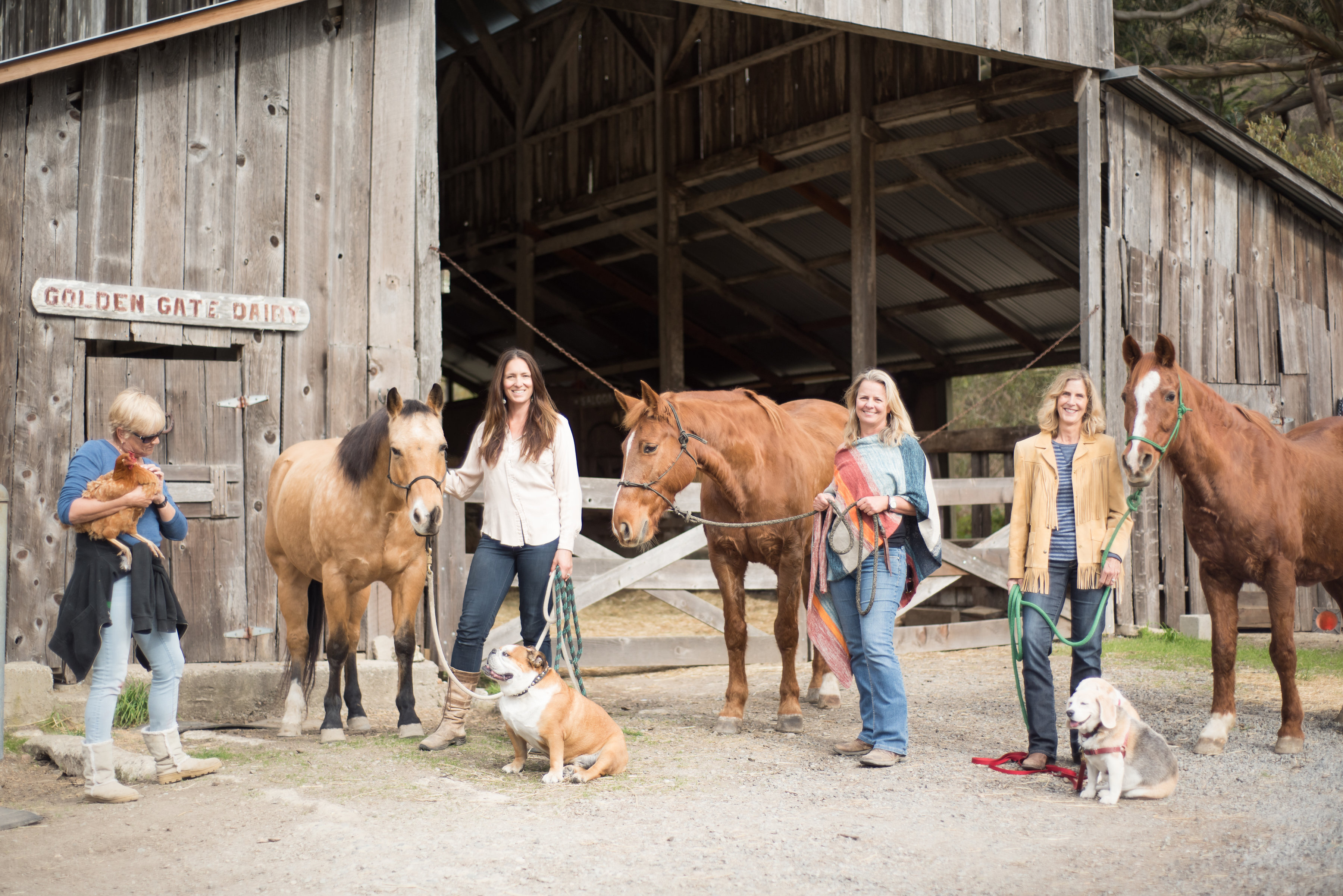
Why the Long Face, Founder? The New Executive Coach Has Four Legs and a Mane
Silicon Valley founders turn to equine therapy for assistance during trying times.
Last year, Eurie Kim, a managing partner at Forerunner Ventures, took some of her portfolio founders on a field trip. They were going to spend the day at the Golden Gate Dairy Stables, a ranch in Marin County traversed by scenic trails with pristine views of the Northern California coastline. But Kim and the startup founders weren’t there for the views. They were there for Judith Forrest’s horses.
Forrest, a startup consultant and executive coach, works with founders to find their leadership style, improve decision-making and study the nuances of communication. Sometimes this work involves horseplay. Shortly after arriving at the ranch, Forrest invited the founders to gaze upon a herd of horses, who were grazing lazily on an open field.
One of the founders pointed to a stocky Icelandic breed, which appeared to be lost in thought. The founder worried that something was wrong—shouldn’t the horse be doing something? Forrest considered that observation an opportunity for self-reflection. Was the founder overly fixated on staying busy, at the expense of conserving energy? What did the Icelandic horse reflect about her leadership? “We deal with what shows up,” Forrest told me recently. “It's often these tiny moments that can have an immense impact.”
Kim’s group wasn’t the first of its kind to visit the stables. Forrester has also served clients from Andreessen Horowitz and Redpoint Ventures, and has hosted off-sites for tech companies like Cisco and Zoom. Equine therapy—or equine-assisted learning, as the workshops are often called—has gained traction among startup founders and CEOs seeking greater self-reflection. “It’s not like Mr. Ed,” said Kim. “They’re not telling you: ‘Fire your CTO!’” But in subtle ways, she said, horses can reveal internal issues that, if left unchecked, could lead to a miserable founder, or even a startup’s implosion.
At the Golden Gate Dairy Stables, Forrest invited the founders to guide a horse on a lead line around a small arena. “Some leaders were very tentative, like, ‘OK, horsie, where do you want to go?’” said Kim. “And the horse would not budge because it had no idea what you were asking it to do.”
One of the founders, Alexa Wahr, stepped into the pen mulling over a work issue. Her co-founder was about to go on maternity leave, just as they were preparing to raise a round for their startup, a women’s marketplace called Revel. “She usually leads the fundraise for us, so I was thinking, would I be able to step up?” Wahr said. As she led the horse around the pen, some people in the group observed her calm confidence. “They were like, ‘You're different from your co-founder, who is more extroverted, but there is equal power in your calm energy, and you can see that with the horse,’” she said. Wahr decided she could raise the round on her own. “It was amazing to have these other founders and a VC giving you words of confidence that you might not know or see in yourself.”

“If you put horses out with an executive team, within five minutes you’ll know which one’s the leader, which one’s passive aggressive, which one loves their job, which one is looking for a new job,” said Mindy Tatz Chernoff, founder of The Resonant Horse, which offers one- and two-day equine workshops at an equestrian facility northwest of Philadelphia. “Horses are mirrors of us.”
Chernoff has worked with horses for decades, and mainly offers workshops in a therapeutic context, either for special needs children or for “middle-aged women in transition.” But in the last few years, her equine workshops have also taken off among the business class, a group that is increasingly seeking alternative forms of self-reflection. Chernoff now offers workshops designed to help business leaders develop their assertiveness, improve their communication or even explore new tools for innovation in their companies.
Chernoff believes equine work offers advantages over other leadership development programs that have become popular among the startup set. Strength assessments—like the popular Enneagram test—rely too much on a person’s self-knowledge and leave out important context like how that person fits into their social setting. Group work gets around that problem by placing leaders in the room with other people. This type of leadership development has been popularized by the Stanford Graduate School of Business, where a class on interpersonal dynamics is mandated and affectionately known as the “touchy-feely” requirement. Now, training groups or “t-groups” have become popular among startup founders, whether in informal settings or at formalized retreats.
But people bring their own judgments and projections into group work that can make it difficult to parse the dynamics. Was one person too harsh or was the other person too sensitive? Horses, Chernoff said, make for more objective observers. “Horses offer us immediate, in-the-moment feedback,” she said. “What we’re feeling, they will reflect it. And they do that in how they move, in how they stand, how they shake.”

Beverley Kane is an adjunct assistant professor of medicine at Stanford and the creator of Horsensei, which provides equine workshops near the Stanford campus in Woodside, Calif. Like Chernoff, she has hosted a number of leadership retreats, including off-sites for employees of tech companies such as Apple. “Horses don’t relate to everybody in the same way, so you really see the unique attributes of each participant come out,” she said. “The equine world can reveal your energy, your chi, your body language, your emotional state.”
Kane said teams approach her for various reasons: Some want to work on their leadership skills, building teamwork or boosting morale. “Some teams have a psycho-spiritual agenda, where they want people to feel like their lives have meaning and their work has meaning. Others are considering promotions, or layoffs, or new hires,” she said. Once Kane taught an equine workshop for a health technology company, which consisted of wine tasting and a horseback ride through the vineyard—less emphasis on the therapy and more on the pastoral landscape. “Sometimes,” she said, “people just need a break.”
When the business class is looking for reflection, though, Kane said, horses make marvelous companions. She offers a series of exercises designed to assess how someone’s temperament and style might be showing up at work. Some of the exercises are performed as a team, like a “herd” activity in which participants guide a horse around an arena using only their body language to communicate. That exercise can reveal who naturally takes the dominant role in a team, who recedes into the background and who struggles to communicate well with others.
Other exercises are performed alone, with the rest of the group looking on. In one, which Kane calls “lunging the horse,” a participant is asked to lead a horse around a 60-meter round pen. The exercise is meant to put their leadership style on display: Do they pull the horse forcefully, trying to drag it around the pen? Can they look straight ahead, leading the horse with confidence? At one of Kane’s off-sites, with a tech company's sales team, she watched one particularly aggressive employee rile up a horse until it slipped in the mud and fell. “There was a collective gasp. It was so clear to everybody that he was overly aggressive—with the horse and as a salesperson,” she said. “I heard soon after that they asked him to leave [the company].”

While equine workshops have become increasingly popular among groups, some startup CEOs have also turned to them to navigate personal challenges. Jaclyn Baumgarten, a co-founder and CEO of the boat rental marketplace Boatsetter, discovered equine therapy during a time of personal need. Her mother had died, and she had forestalled the mourning process to finish an important deal at work. “I hadn’t allowed myself to grieve,” she said. “We become these machines because we put our companies first.”
When the deal was finished, Baumgarten traveled to a small farm in Ohio to spend a week working with an equine therapist. There, among a herd of Clydesdales, Baumgarten was finally able to let go. “This horse that was seven feet tall dropped his head down and pressed his cheek against mine and held it there while I talked and I cried,” she said.
Kim, the Forerunner venture capitalist, also discovered equine therapy during a challenging time, having both lost her mother and given birth to her second child. A close friend recommended Forrest, and Kim signed up for a half-day retreat at the Golden Gate Dairy Stables. At first, the experience seemed “hokey.” She was, after all, communing with a herd of large-bodied animals. But after a few hours at the ranch, she felt a sense of calm and clarity that she had not had when she arrived.
This year, Kim plans to bring another group of founders out to the ranch in Marin for an equine workshop. It remains to be seen how open the next group will be to such a practice, given the unhokey economic realities of the moment. But “pounding your head up against a wall doesn’t solve problems,” Kim said. Sometimes, you need a good gallop.
Wahr said she left the Golden Gate Dairy Stables feeling like she had been more vulnerable than she ever had before in front of other founders. “We're all workaholics, we all have our own companies, and we don't open up in front of each other very often,” said Wahr. But with the horses, “we were forced to do that. Some people became very emotional. There were tears shed.”
Arielle Pardes covers tech culture for The Information’s Weekend section. Previously, she was a senior writer at WIRED in San Francisco.